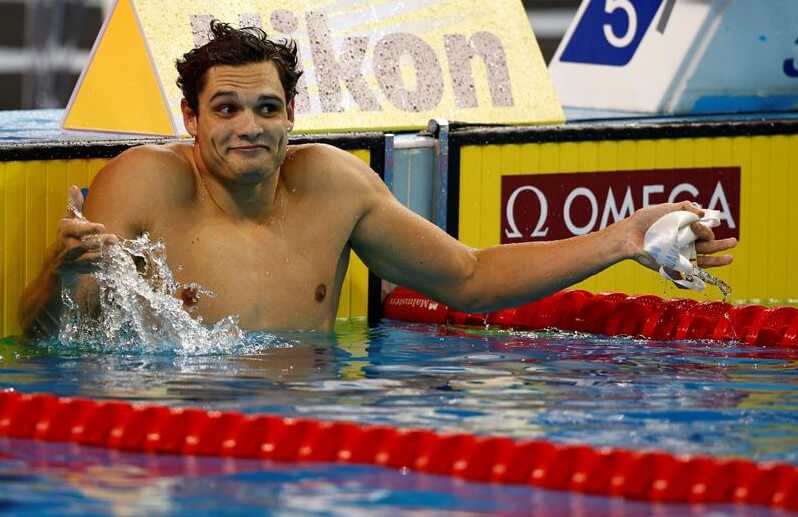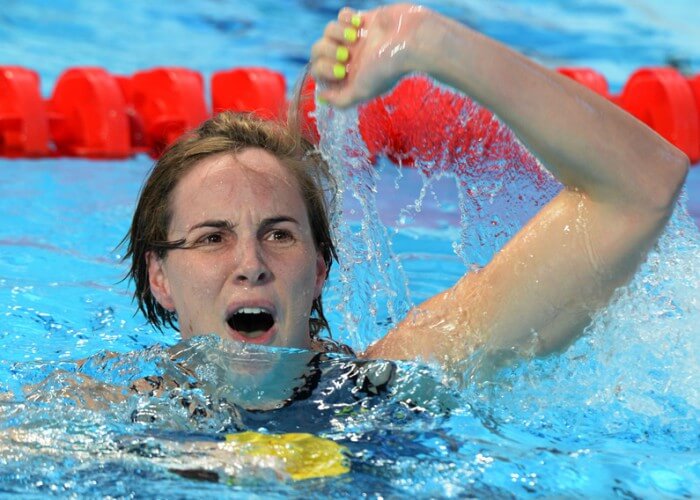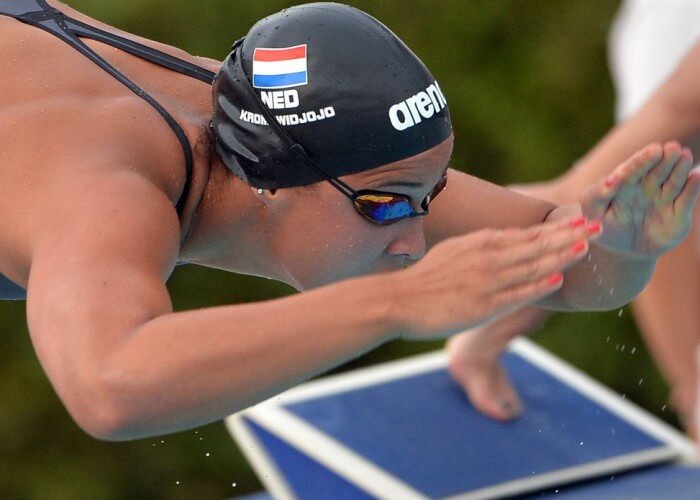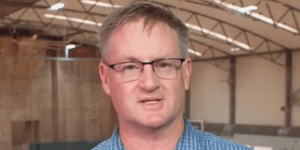Swim Training: How Much Should We Be Doing?

Swim Training: How Much Should We Be Doing?
By Wayne Goldsmith
Introduction:
I’ve had numerous poolside conversations, attended over 50 hours of lectures and workshops at major swimming conventions in the U.S., Australia and Great Britain, enjoyed many, many long phone calls and SKYPE calls, had countless coffee, breakfast, lunch and dinner discussions, shared hundreds of emails and texts with coaches, sports scientists, researchers and swimmers all over the world, and there is always the Distance Debate: How Much Swim Training Should My Swimmers be Doing.
This goes way beyond the “energy-system-specificity” discussions that have periodically challenged the coaching philosophies of the sport over the past 50 years.
I’m in a very fortunate position.
I’ve discussed and debated this topic with world-class coaches and leading sports science minds in Australia, the U.S, Great Britain, France, the Netherlands and many other swimming nations. My views are not tied to those of any one nation – coach – philosophy – doctrine – product or company.
These are my views on the topic after carefully considering the hundreds of hours of debate I’ve been involved in over the past year regarding appropriate training distances and optimal physical loading for swimmers.
The State of Play – The Distance Debate’s Past.
To look forward, sometimes you have to look back: back to understand why it is we do what we do.
Many of the great swimming coaches of the past 50 years around the world based their greatness on the values of hard work, discipline and the relentless, uncompromising commitment to training longer and harder than anyone else was prepared to.
Coaches took pride in knowing that their swimmers did more sessions, swam more laps and worked harder than their competition – and that it was this commitment to high swim training loads that built the foundations of competitive swimming success.
The hard work-high volume concept was – and is – relatively simple to understand and for the most parts it’s an extremely effective swimming coaching philosophy. It goes like this:
If my swimmers work harder more often than your swimmers – so that the average “fitness” of my swimmers is higher than the average “fitness” of your swimmers, then – on average, my swimmers will defeat your swimmers in competition.
In addition, swimming sports science was coming of age in 60s, 70s and 80s and many of the sport’s leading coaches, writers and thought influencers of the time: Carlile, Counsilman, Colwin, Maglischo and others all wrote about the importance of developing an early season “base” of aerobic type training. In (Forbes) Carlile’s case, his “speed-through-endurance” philosophy influenced the thinking and coaching methods of several generations of Australian swimming coaches.
This “aerobic-base” concept has flourished in all endurance sports and in reality is still the dominant swimming coaching philosophy applied in most parts of the world.
However, as the world outside swimming seeks to find faster, better and more efficient ways to do things – the traditional hard work-high volume philosophy has increasingly come under scrutiny.

Photo Courtesy: R-Sport / MIA Rossiya Segodnya
Change – The Swim Training Distance Debate’s Present
As society strives for new and better and faster ways to achieve success in all fields of endeavor, it is natural that swimming coaching methodologies similarly face challenge, review and debate.
In recent years – partly due to some good research, innovative coaching and occasionally as a result of some clever marketing, swimming has experienced an unprecedented influx of new ideas, new training approaches and new coaching methodologies – all seeking to help coaches and swimmers realise their potential effectively and efficiently – i.e. the “more with less” philosophy.
Some of these new approaches offer great potential to progress the sport and may even provide the catalyst to inspire real breakthroughs in the coaching of competitive swimmers in the future. These include
- H.I.I.T. (High Intensity Interval Training)
- P.T. (Polarized Training) and
- U.S.R.P.T. (Ultra Short Race Pace Training)
However……to someone with a hammer – every problem seems like a nail.
Is H.I.I.T. the best way to go? It’s got some good things going for it as a concept – but it’s unlikely to be the best.
Will P.T. prove to be the only way of developing both speed and endurance in competitive swimmers? It’s an interesting method of training but will it prove to be the only way swimmers can achieve success. No.
U.S.R.P.T.? I’ve known U.S.R.P.T. master-mind Dr. Brent Rushall for a long time. He’s a smart guy – a brilliant scientific mind and an outstanding thinker. There’s a lot of great stuff in the U.S.R.P.T. philosophy – particularly in regards the need for consistent, precise, deliberate coaching but is it the only way to develop swimmers. I personally doubt it.
When you have the great honor of working with many leading coaches and sports scientists around the world, one thing is clear: there is no one way of doing things.
There is no proven, infallible, all-encompassing – all-knowing – all successful philosophy that will work for every coach and every athlete – (i.e. all ages, all strokes, all events and both genders) on the planet.
A Worldwide Shift in Swim Training For Sprinters.
There is however a very clear shift around the world in the swim training of senior sprinters (i.e. late teens and older) towards relatively low volume – high intensity training.
Some of the world’s fastest 50 and 100 metre sprinters in Australia, the U.S., France, Great Britain and the Netherlands are swimming in some cases half (yep – you read it right) – 50% of the volume of more traditional hard work – high volume programs.
But…before you excitedly jump on the “let’s do a lot less training” bandwagon, here are some important issues to consider.
- The sprint programs that have adopted the low volume – high intensity training philosophy are still training very hard. They may have reduced in-pool training volume but their commitment to dry-land, running, general-athleticism, fitness, core-stability, strength-training, etc – has increased dramatically. The programs which have successfully adopted a reduced pool-training load have – if anything – significantly increased their overall training commitment and their adherence to the principles and practices of good nutrition, recovery, sleep management and psychological / emotional well-being. There are no short cuts in the journey to swimming success – just different paths.
- The effectiveness of the low volume high intensity swim training philosophy is uncertain in distance swimmers, medley swimmers and 200 metre form strokers. At present – the leading athletes in these events are still – for the most part – coming from coaching programs with more traditional approaches to in-pool training loads.
- Whilst the “selling” of a low volume high intensity training program to young swimmers (and their parents) is easier than trying to convince them that 10 sessions a week is the way to go – coaches need to be clear why they believe a reduction in pool training volume is their new coaching philosophy.
The message is clear.
Having spoken with and observed the programs of some of the world’s leading sprint swimming coaches, just doing less volume in the pool is not the answer.
Decreasing pool training volume necessitates a more holistic, intelligent, logical and innovative approach to coaching and a very deliberate and purposeful philosophy behind swimmer development: it’s so much more than just cutting back on laps and pool workouts.

Photo Courtesy: Gian Mattia Dalberto/Lapresse
Forward Thinking and Looking – The Distance Debate’s Future For Swim Training
So….where is the distance debate heading?
Where is the sport of swimming shifting in practice philosophies and training methodologies?
It’s impossible to say with any certainty.
However, what does appear certain is that as a coach you can sit back and wait for the future to come to you and follow the thinking, innovations and practices of braver, bolder, brighter forward reaching coaches.
Or you can forge your own future: you can cut your own path and find ways of helping your swimmers to get faster – sooner.
From my perspective after a long, long year researching and thinking about this issue, I believe that we need to shift away from the obsession with the volume, intensity and frequency debate, (i.e. the physiology of swimming) towards more holistic, integrated training methodologies where psychology and swimming biomechanics are emphasized to a far greater degree than they are in most programs at present.
A quick look into the swimming crystal ball might show for example…
- A far greater emphasis on mental skills development and emotion management strategies for swimmers of all ages;
- An ongoing journey of experimentation of ways to intelligently connect and integrate pool training with non-pool training;
- A much great emphasis on quality coaching and deliberate intervention in training – where the art of coaching becomes the unquestioned driver of the science of swimming;
- A requirement for all coaches to have a greater understanding of technique and skills development – above and below the water;
- The development of closer working partnerships with parents and partners to provide swimmers with a “whole of life”, holistic development framework.
No matter what happens – looking at how performances have progressed over the past 100 years of swim training and swimming history we know that the future will be faster.
Summary
- Regardless of the science, “pseudo-science”, “myths”, “sales-pitches” and “anecdotes” that thrive in this sport, it’s important to figure out what it is you believe in and why you believe in it. Then – once your coaching philosophy is clear, become the best you can be as a practitioner and as a professional in implementing that philosophy in every aspect of your coaching and swim training. “if you stand for nothing – you will fall for anything”.
- In the end – no matter what the sales-staff who are promoting one particular training system over another say – 25 years working in swimming at all levels and all over the world tells me that there is no one perfect, guaranteed to work, one-size-fits-all swim training system to suit all athletes of all ages and of all levels of ability. Coaches need to work closely with their athletes, spend time trying to understand them and continuously strive to find unique, engaging and effective ways to help their individual athletes realize their full potential.
- Fads, ideas, innovations, challenging new research findings and new products will always be finding their way into the sport. As a coach, look, listen and think about everything you see and hear – carefully assess its value and relevance to your coaching and continuously make intelligent, systematic changes to your program based on its potential capacity to help your program and your athletes improve.
Wayne Goldsmith





Russell Krzyzanowski
Gus Benoit
Well done Wayne.
More than the current 0 hours.